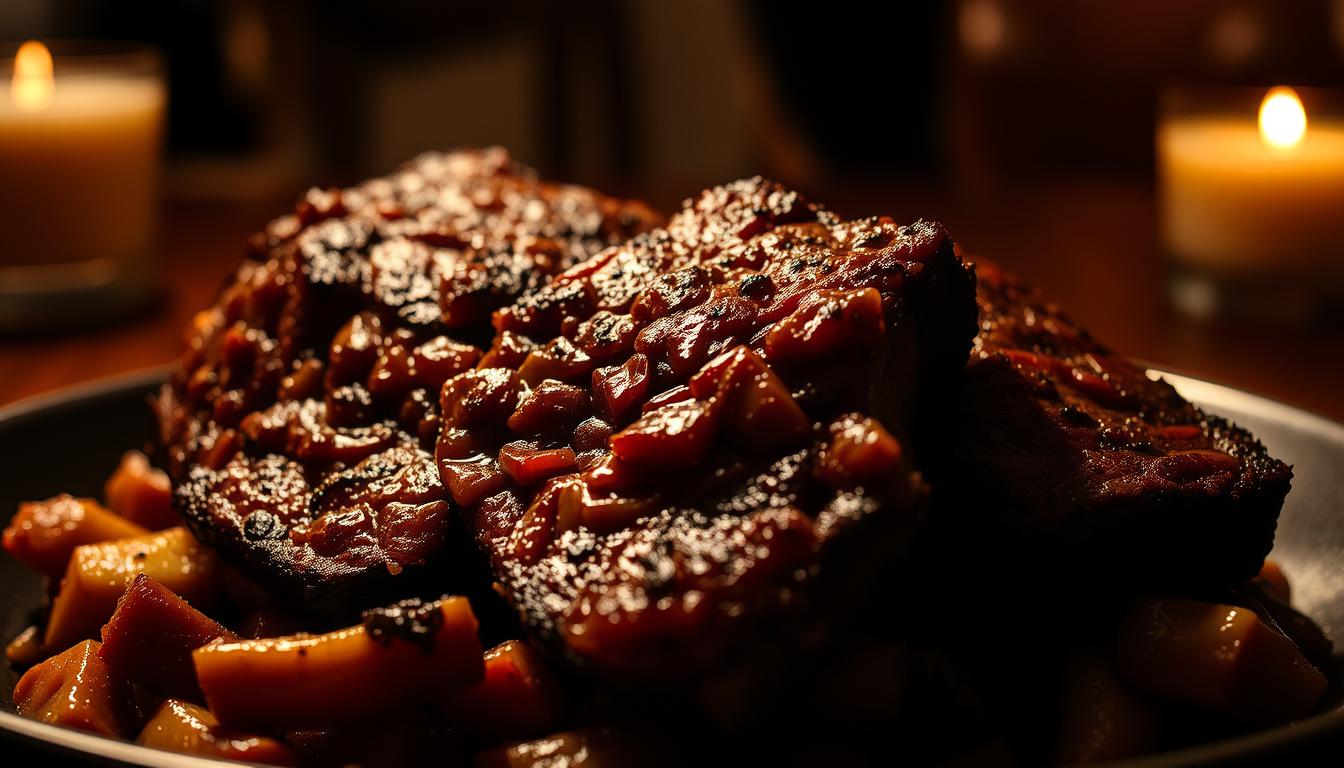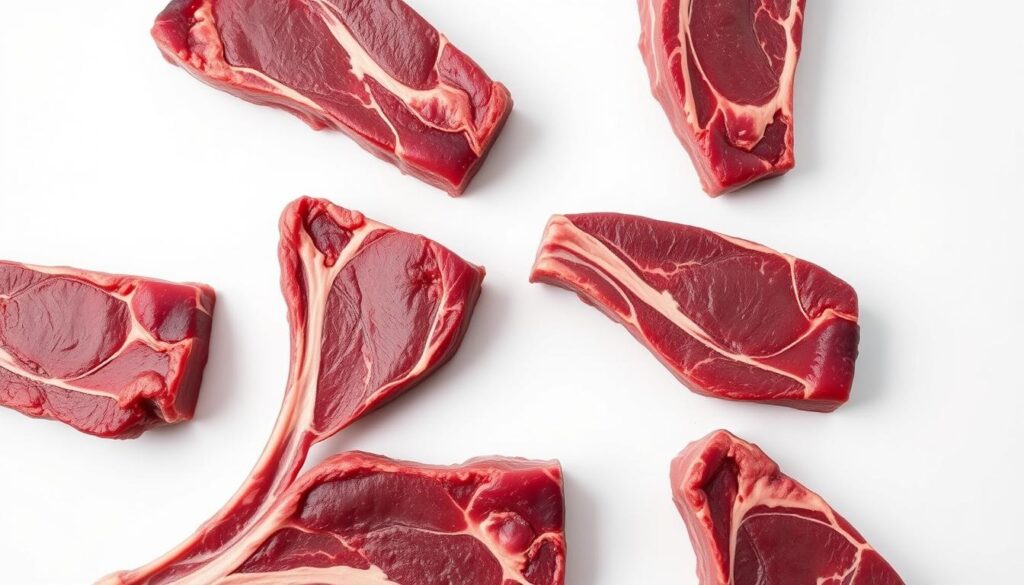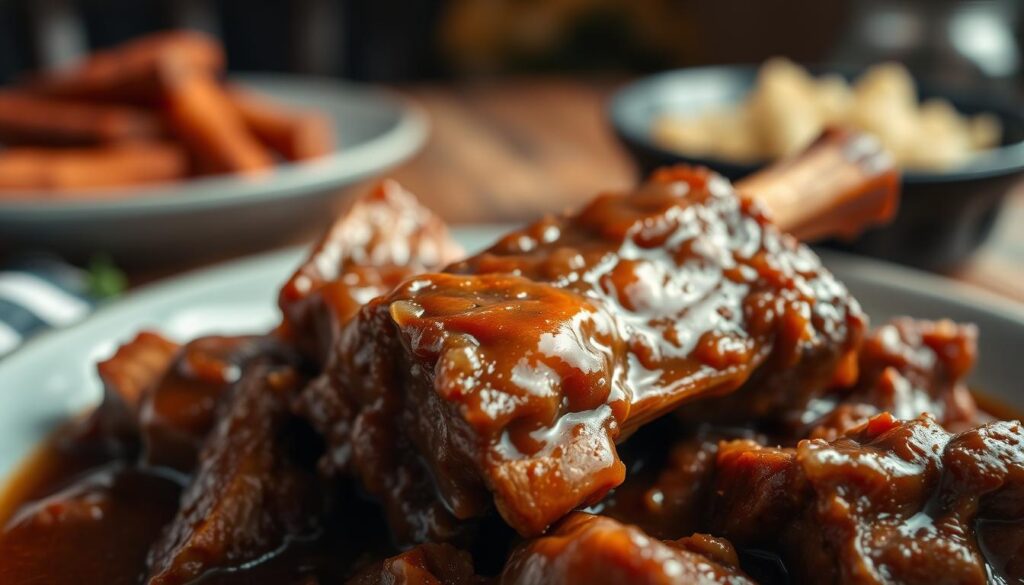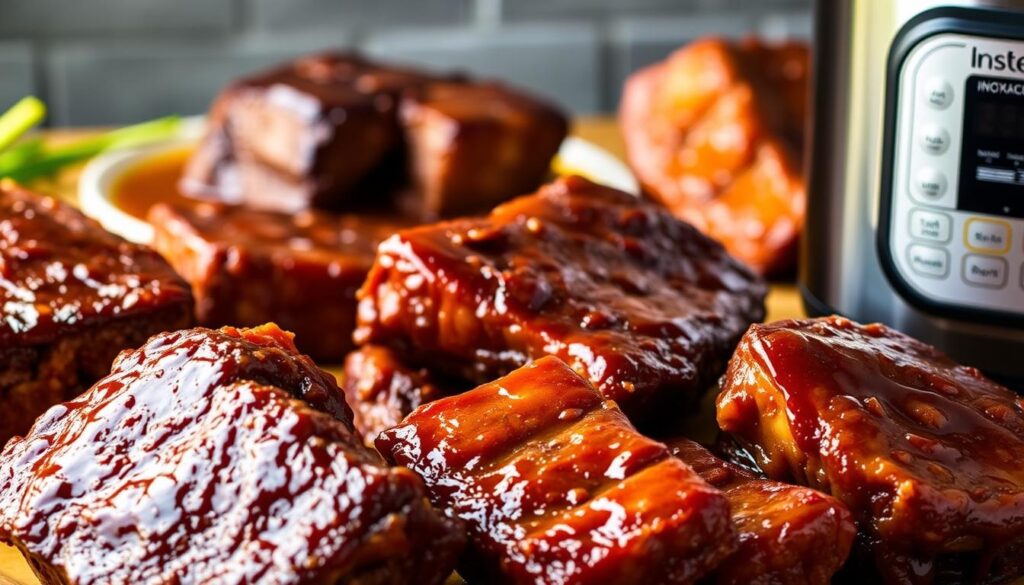What Are Boneless Short Ribs and How Do You Prepare Them?

Unlike traditional bone-in ribs, boneless short ribs offer a more straightforward cooking experience. They can be cooked in various ways, including stovetop, oven, or even a slow cooker. The flexibility of cooking methods allows you to achieve tender, fall-apart meat with minimal effort. Some recipes incorporate liquids like stout beer or red wine to enhance the flavor profile, while others keep it simple with classic seasonings.
Preparing boneless short ribs is a breeze. Start by seasoning the meat with salt, pepper, and your favorite spices. Coat them lightly with flour for a crispy sear, then brown them in a pan or Dutch oven. After searing, let them simmer in your chosen liquid on low heat for at least two hours. The longer cooking time ensures the meat becomes tender and infused with flavor.
This recipe is perfect for a weeknight dinner or a special occasion. With just 15 minutes of prep time and a few common ingredients like beef, salt, and pepper, you can create a meal that’s both impressive and delicious. Whether you’re cooking for two or a crowd, boneless short ribs are sure to please.
Table of Contents
Understanding Boneless Short Ribs
Boneless short ribs are a popular cut of beef known for their rich flavor and tender texture. Unlike bone-in ribs, they are easier to handle and cook, making them a favorite among home cooks and professional chefs.
Definition and Cut Differences
These ribs come from the chuck or rib section of the cow. The English cut is the most common, where the meat is cut into strips without the bones. Another variation is the Flanken cut, which is sliced thinly across the bones and often used in Asian dishes.
Nutritional and Flavor Profile
A 3-ounce serving of boneless short ribs contains about 250 calories, 20 grams of fat, and 20 grams of protein. The marbling (fat distribution) in the meat contributes to its tenderness and flavor. Look for bright red meat with even fat streaks for the best results.
Cut Differences Explained
- The term “short” refers to both the length of the ribs and the cooking method. Short ribs are ideal for slow cooking to achieve fall-off-the-bone tenderness.
- English-cut ribs are meatier and easier to handle, while Flanken-cut ribs are leaner and often used in stir-fries.
Nutritional Highlights
Each serving provides significant amounts of iron and zinc, making them a nutritious choice. The fat content can be reduced by cooking methods like braising, which uses liquid to keep the meat moist without added oils.
Flavor Enhancement
The choice of ingredients greatly impacts the final dish. Using high-quality beef and aromatic spices ensures a flavorful outcome. Red wine, soy sauce, and herbs like thyme are common additions to enhance the taste.
Choosing the Perfect Boneless Short Rib
When it comes to selecting boneless short ribs, the quality of the meat can make a significant difference in the final dish. Ensuring proper marbling and even cuts is crucial for achieving tender and flavorful results.
Quality Check and Marbling Tips
Start by visually inspecting the meat for optimal marbling. Look for even fat distribution throughout the beef, as this ensures tenderness and flavor. Avoid pieces with excessive fat, as they can make the dish overly greasy.
Next, consider the balance of salt and pepper. Pre-seasoning the ribs with a mix of these spices enhances the flavor profile. For the best results, season generously and let the meat sit for about 30 minutes before cooking to allow the seasonings to penetrate deeply.
Opt for cuts that offer more meat per piece. This not only provides better value but also reduces waste. Common cuts available in grocery stores are ideal for this purpose, offering a good balance between meat and fat.
Properly trimming the meat is essential. Remove any excess fat to ensure even cooking and to prevent the dish from becoming too fatty. This step also helps in achieving a more balanced flavor.
When deciding between boneless short ribs and bone-in options, consider the cooking method and desired outcome. Boneless ribs are generally easier to handle and cook more uniformly, making them a preferred choice for many home cooks.
| Feature | Boneless Short Ribs | Bone-In Ribs |
|---|---|---|
| Cooking Time | Shorter due to even thickness | Longer due to bone density |
| Ease of Serving | Easier to portion and serve | More challenging due to bones |
| Flavor | Even distribution of flavors | Concentrated flavor around bones |

By following these tips, you can select the perfect boneless short ribs for your recipe, ensuring a delicious and memorable meal.
Step-by-Step Cooking Process for Tender Short Ribs
Transform your cooking with a simple, flavorful approach to crafting tender short ribs. This guide will walk you through each step to ensure a delicious outcome.
Searing and Browning Techniques
Start by heating a heavy pot or Dutch oven over medium-high heat. Add a tablespoon of olive oil and a pat of butter for richness. While the pot heats up, coat the ribs lightly with flour, shaking off any excess. This creates a flavorful crust.
Sear the ribs for about 5 minutes per side until they’re nicely browned. This step is crucial for developing a rich, caramelized crust that enhances the overall flavor.
Braising Methods and Liquid Selection
After searing, deglaze the pot with beer or red wine, scraping up the browned bits from the bottom. This adds depth to your dish. Next, pour in beef broth, ensuring the ribs are mostly submerged. Bring the mixture to a simmer, then reduce the heat to low. Cover the pot and let it braise for 2 hours, or until the meat becomes tender and falls apart easily.
Monitor the pot every 30 minutes to ensure the sauce isn’t too thick. If needed, add a little more broth. After 2 hours, the ribs should be tender, and the sauce will have thickened perfectly.

By following these steps, you’ll achieve tender, flavorful short ribs that impress every time. The key is patience and attention to detail, ensuring each minute contributes to a memorable meal.
Exploring Variations, Slow Cooker, and Instant Pot Adaptations
Discover how to adapt your boneless short ribs recipe to fit your busy lifestyle with these convenient methods. Whether you prefer the hands-off approach of a slow cooker or the speed of an Instant Pot, these adaptations ensure delicious results every time.
Alternative Cooking Methods
For a hassle-free experience, try using a slow cooker. Brown the ribs on the stovetop, then transfer everything to the cooker with your choice of liquid. Cook on low for 8-10 hours or high for 4-6 hours. The slow cooker ensures tender meat with minimal effort.
Alternatively, an Instant Pot can significantly reduce cooking time. Brown the ribs using the sauté function, then add liquid and cook on high pressure for 45 minutes. Let the pressure release naturally for 15 minutes before serving.
Make-Ahead and Freezing Instructions
Prepare your dish ahead of time for convenience. Assemble all ingredients in a freezer-safe bag or container and store for up to 3 months. When ready, thaw overnight in the fridge and cook as usual.
Leftover boneless short ribs can be refrigerated for up to 5 days or frozen for 3 months. Reheat gently on the stovetop or in the oven until warmed through. This makes for a quick and tasty meal any day.
Ingredient Substitutions for Extra Flavor
Customize your recipe by substituting ingredients. Replace red wine with stout beer for a richer flavor or use different herbs like thyme or rosemary. Adjust the sauce bit by bit to your taste preferences for a unique twist.
| Method | Cooking Time | Key Tips |
|---|---|---|
| Slow Cooker | 8-10 hours (low) 4-6 hours (high) | Brown ribs first for enhanced flavor. |
| Instant Pot | 45 minutes (high pressure) 15 minutes natural release | Sear in the pot for a caramelized crust. |

These methods offer flexibility without compromising on quality, making them perfect for busy days. Whether you’re using a slow cooker or Instant Pot, your boneless short ribs will be tender and full of flavor. Store leftovers properly to enjoy your meal for days to come.
Final Steps for a Memorable Meal
As you near the end of your cooking journey, a few final touches will elevate your dish to new heights. Letting the meat rest for an extra hour allows the juices to redistribute, ensuring every bite is tender and flavorful. This simple step is crucial for achieving the perfect texture.
Next, skim off any excess fat that rises to the surface of the sauce. This not only enhances the dish’s appearance but also refines its texture, making each mouthful more enjoyable. Once the fat is removed, add a cup of beef broth or reserved sauce to balance the flavors. This step ensures the sauce isn’t too thick and complements the meat beautifully.
Tasting and adjusting the seasoning is essential. Take a moment to sample the sauce and make any necessary tweaks to the seasoning. This attention to detail ensures your dish is perfectly seasoned and memorable. For serving suggestions, consider pairing the ribs with creamy mashed potatoes or a crisp salad for a well-rounded meal.
These final steps transform your boneless short ribs into a dish that’s not only tender and rich in flavor but also memorable for any occasion. The combination of resting, skimming, and flavor adjustments ensures a culinary masterpiece that will leave a lasting impression on your guests.
